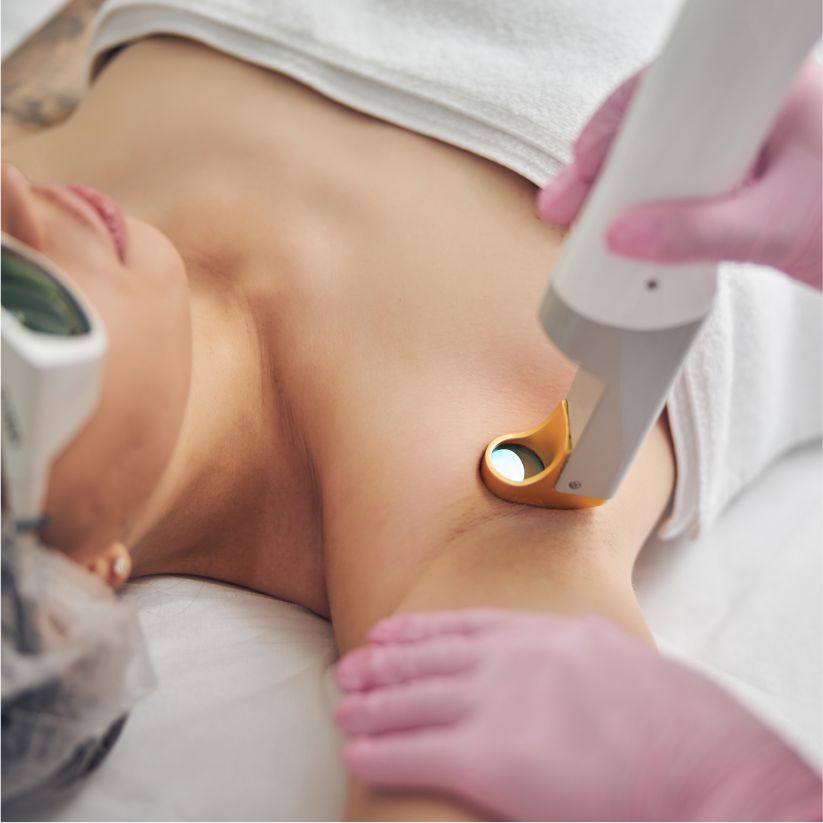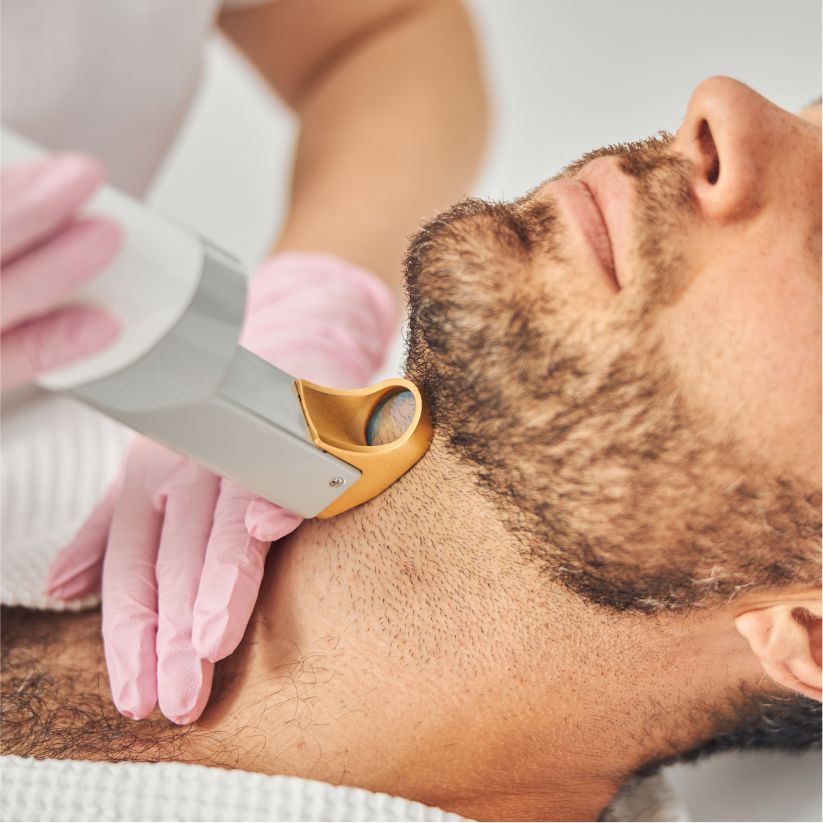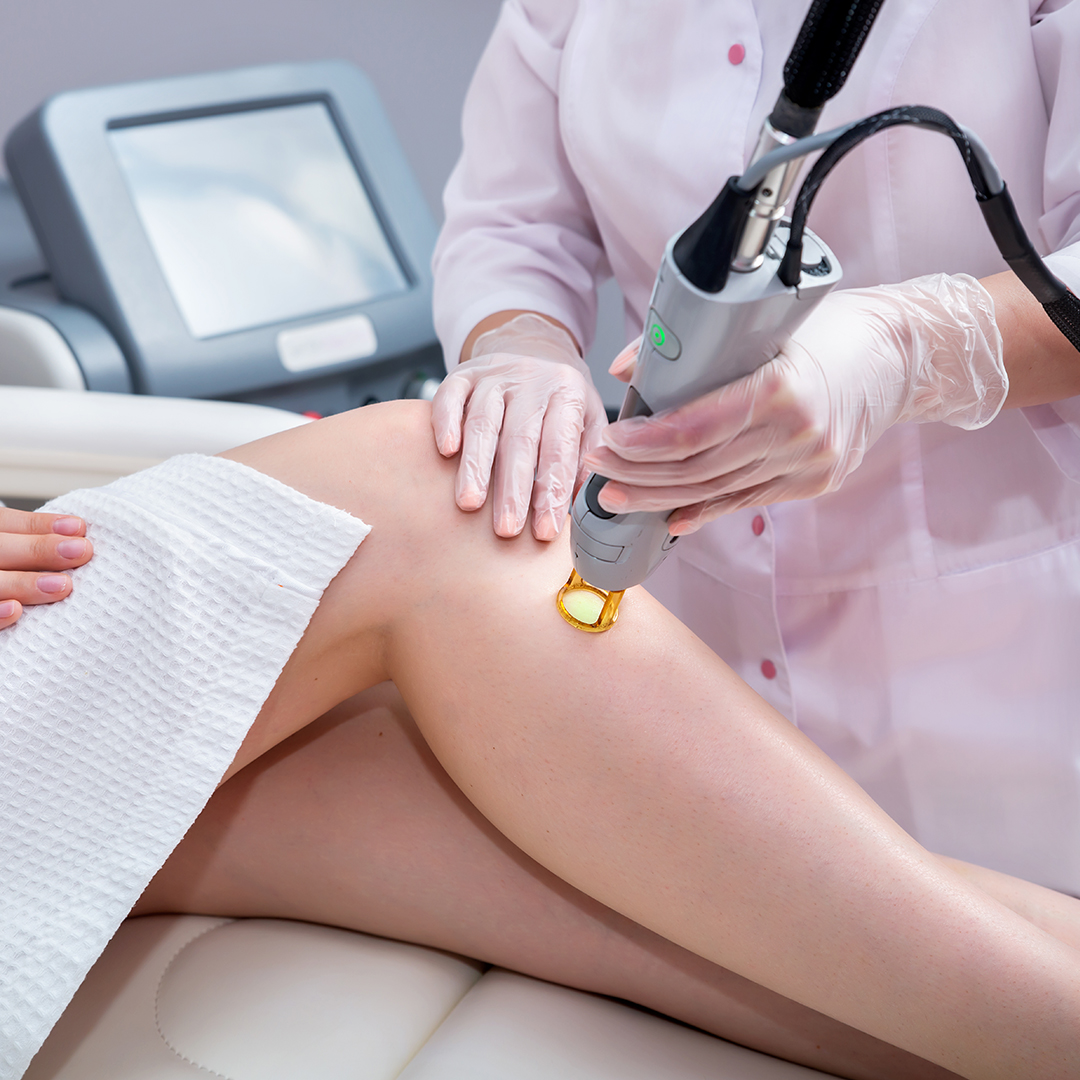Laser Hair Removal



What is the process of Laser Hair Removal?
During laser hair removal, a laser emits a light that is absorbed by the pigment (melanin) in the hair. The light energy is converted to heat, which damages the tube-shaped sacs within the skin (hair follicles) that produce hairs. This damage inhibits or delays future hair growth.
Before the treatment, the area to be treated will be cleansed. The laser treatment will take place in a room set up specifically for laser treatments. Everyone in the room must wear protective eyewear during the procedure. To perform the procedure, the skin is held taut and the skin is treated with the laser. A laser removes hair by vaporizing it. This causes small plumes of smoke that have a sulfur-like smell.
How long your treatment lasts depends on the size of the area being treated. Treating the upper lip takes minutes. If you are having a large area like the back or legs treated, your treatment may last more than an hour.
What does Laser Hair Removal treat?
Laser hair removal can treat hair anywhere on the face or body. Women often treat the bikini area, chin, upper lip, and legs. Men can safely eliminate unwanted hair from places such as their chests and backs.
What are the benefits of Laser Hair Removal?
Laser hair removal can treat hair anywhere on the face or body. Women often treat the bikini area, chin, upper lip, and legs. Men can safely eliminate unwanted hair from places such as their chests and backs.
FAQ's
Laser hair removal is safe and effective for most patients. We use laser hair removal techniques and technology that are FDA-approved. Laser hair removal should not be used during pregnancy or near your eyes.
Most patients remain hair free for months or even years. When some of the hair regrows, it will likely be less noticeable. To keep the area free of hair, a patient may need maintenance laser treatments.
In most cases, laser hair removal causes minimal pain, especially when you compare it to other treatments like waxing. It feels like being snapped by a rubber band. Of course, the area being lasered and your personal pain tolerance will dictate the pain level associated with laser hair removal.
This varies from patient to patient. It depends on hair thickness and area treated. 6 to 18 treatments are typically recommended. Removing hair often requires a series of laser treatments. Most patients can have laser hair removal once every 4 to 6 weeks. After finishing the treatments, most patients do not see any hair on the treated skin for several months or even years. When the hair regrows, there tends to be less of it. The hairs also tend to be finer and lighter in color.
To avoid possible side effects, all patients need to protect their skin from the sun. After laser hair removal, you should:
- Avoid direct sunlight from hitting your treated skin.
- Not use a tanning bed, sun lamp, or any other indoor tanning equipment.
- Follow our after-care instructions.
You will see some redness and swelling after treatment. This often looks like a mild sunburn. Applying a cool compress can help reduce your discomfort.
The most common side effects are minor and last 1 to 3 days. These side effects include: Discomfort, Swelling and Redness. In very rare cases the following can occur: Blistering, Herpes simplex (cold sores) outbreaks, Infections, Scarring, Skin lightening or darkening: In time, skin color tends to return to normal. Some changes to skin color, however, are permanent. This is why seeing a medical doctor who is skilled in laser treatments and has in-depth knowledge of the skin is so important.
You will likely see the results immediately after treatment. The results vary from patient to patient. The color and thickness of your hair, area treated, type of laser used, and color of your skin all affect the results. You can expect a 10% to 25% reduction in hair after the first treatment.
Laser hair removal generally does not require any real downtime. Immediately after having laser hair removal, your treated skin will be red and swollen. Despite this, most people return to their everyday activities.



